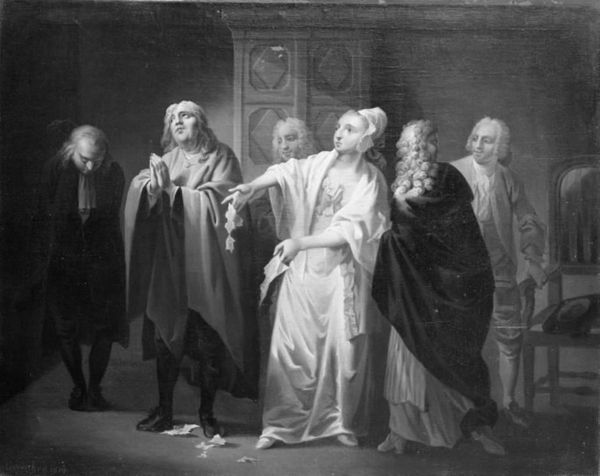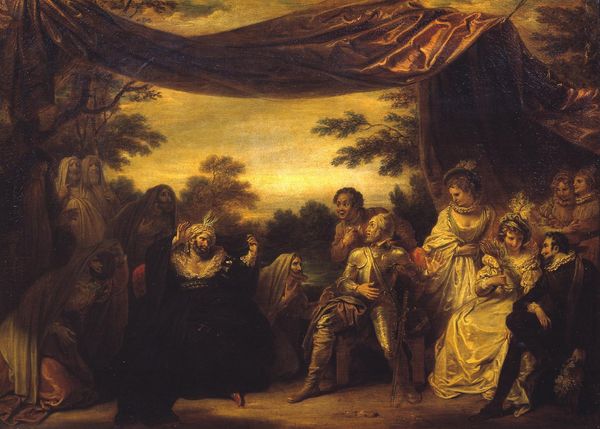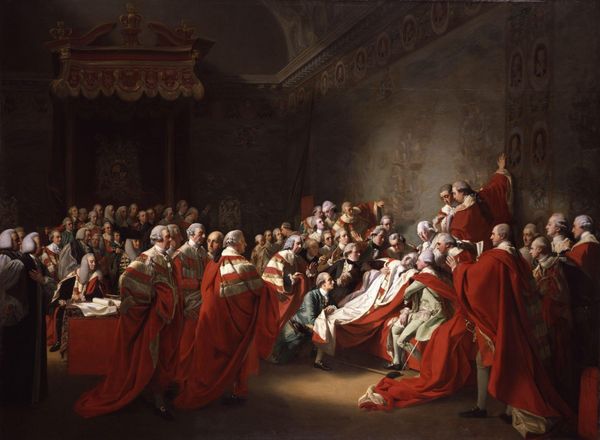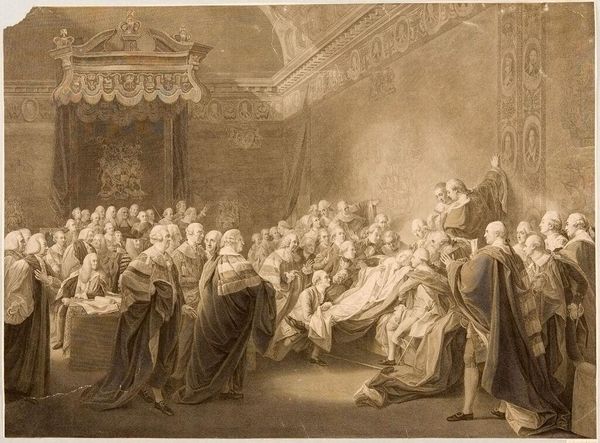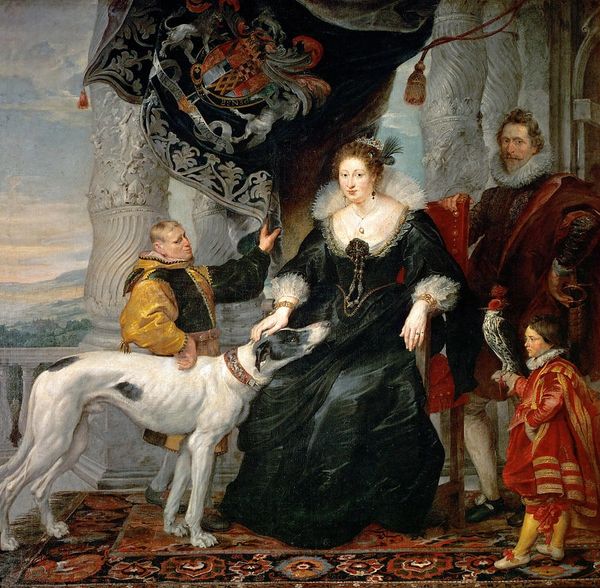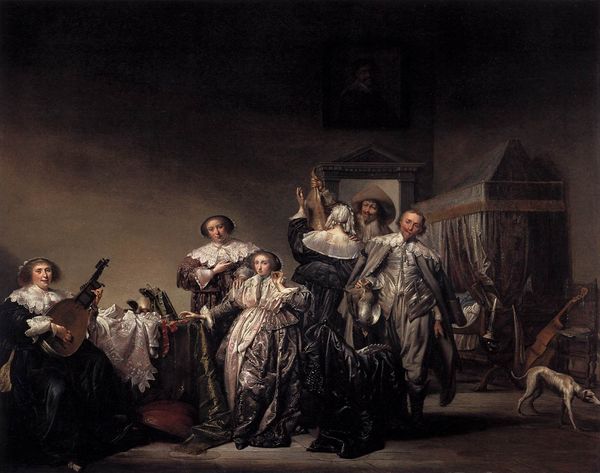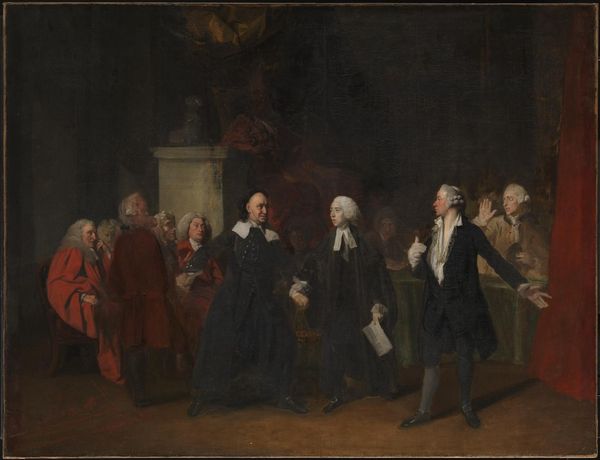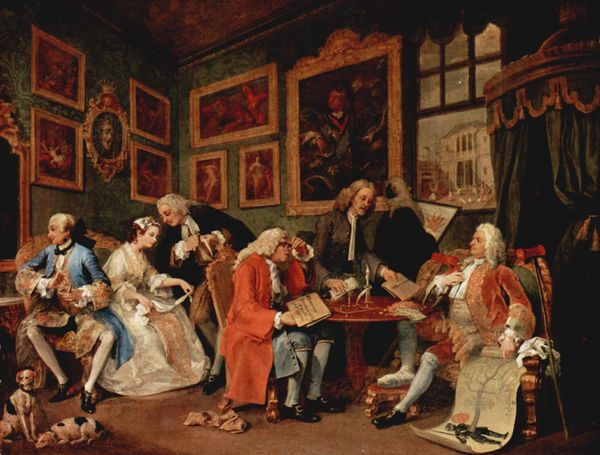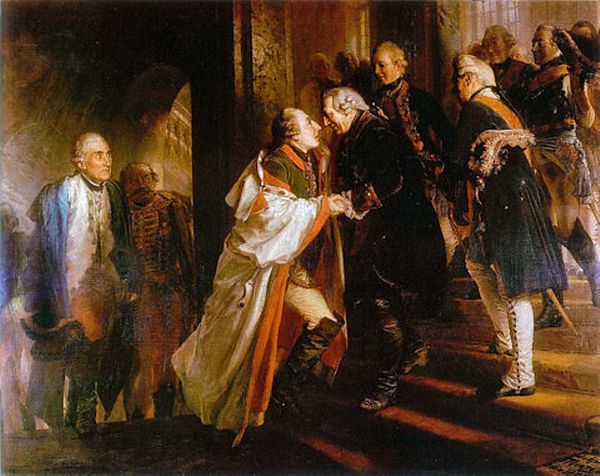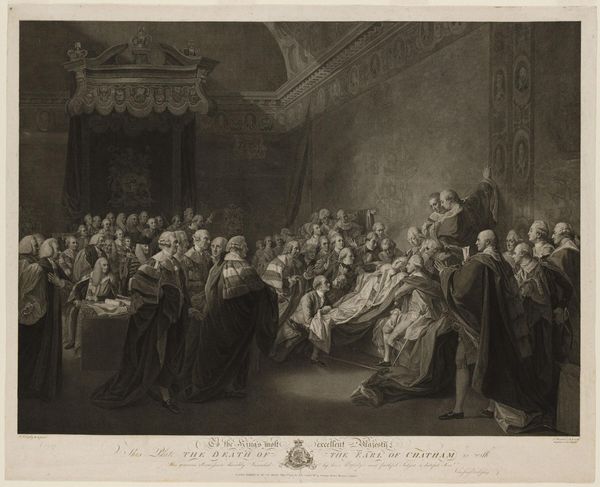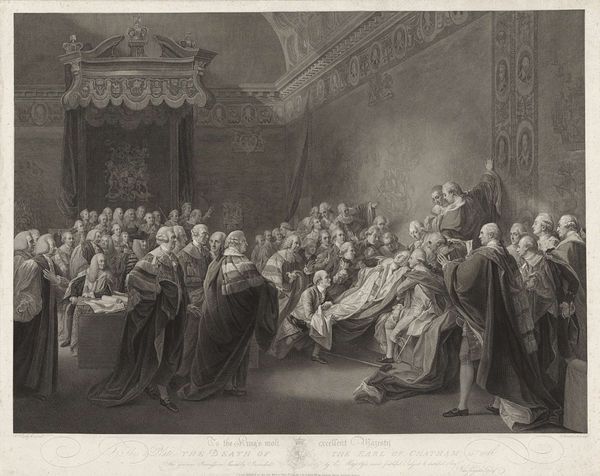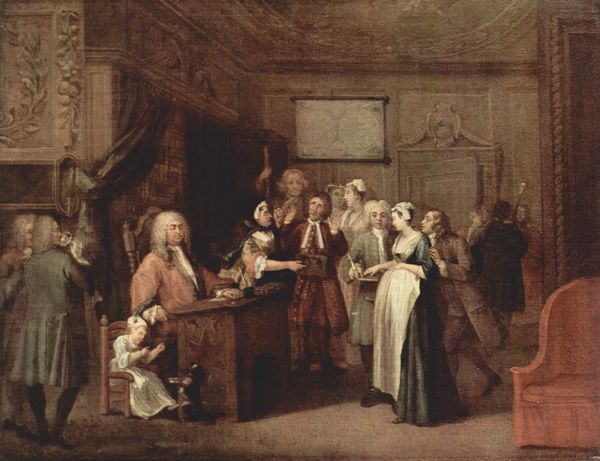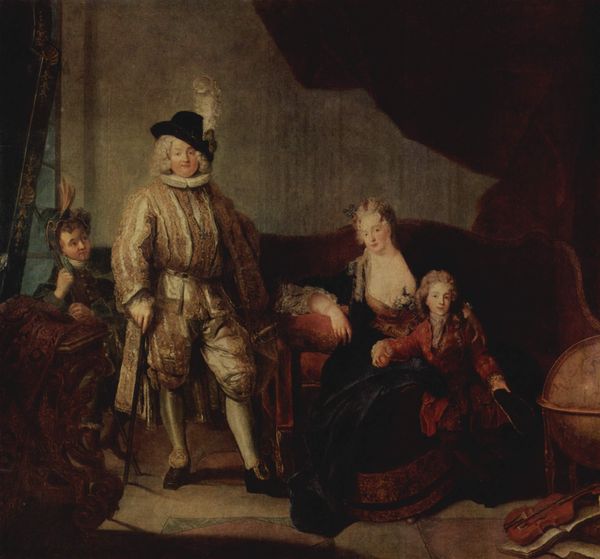
Allégorie des fiançailles de Louis XV avec l’infante Marie-Anne-Victoire d’Espagne 1722
0:00
0:00
painting, oil-paint
#
portrait
#
baroque
#
painting
#
oil-paint
#
oil painting
#
group-portraits
#
history-painting
Copyright: Public Domain: Artvee
Curator: Looking at Nicolas de Largillière's "Allegory of the Betrothal of Louis XV with the Infanta Mariana Victoria of Spain," painted in 1722 with oil on canvas, I'm struck by the artist's effort to depict such an event with such imposing visual symbols of political theater. Editor: My first impression is one of deep foreboding. Even if the scene represents a future alliance, it lacks joy or lightness. The somber hues and stiff postures make it seem almost funereal. Curator: Yes, the dark tones and ceremonial formality do evoke a certain weightiness, though, that might also convey a sense of royal dignity and importance, an almost sanctified atmosphere of a moment in dynastic continuity. The allegory, after all, is intended to elevate the betrothal beyond a mere political transaction. Editor: Dignity at the expense of humanity, perhaps? Notice how each figure seems isolated within their extravagant garb, with these massive wigs and dark, concealing garments—disconnected and untouchable in their roles, bearing this political expectation as a shroud of melancholy and restraint. Curator: But isn't that the essence of royal representation, of a constructed ideal of governance meant to signal divine ordination? Think of the carefully posed figures and their gestures, leading our gaze towards a distant, monumental vision, a representation of royal passage in a far-off scene. Largillière aims to instill respect for the lineage and stability of power, perhaps in response to social unrest during the regency. Editor: Or maybe he's subliminally expressing the strain that arranged political marriages place on individuals—especially women like the Infanta who, at the age of four, was essentially bartered as a diplomatic token. Those imposing figures and oppressive, rigid robes are hardly hiding what feels like coercion to me, not exactly symbols of freedom and choice. Curator: The painting undeniably portrays the spectacle of power, and, yes, there is a visible psychological tension at play beneath these rich Baroque textures that asks us to ponder not just the official image, but also the private, unspoken narrative behind it. It suggests an echo of history beyond the immediate commission and its inherent context of social control. Editor: A moment laden with complexity that challenges our notions of beauty and authority in a historical, dynastic portrait, reminding us that even the most grand displays conceal nuanced social commentaries and struggles for agency.
Comments
No comments
Be the first to comment and join the conversation on the ultimate creative platform.

